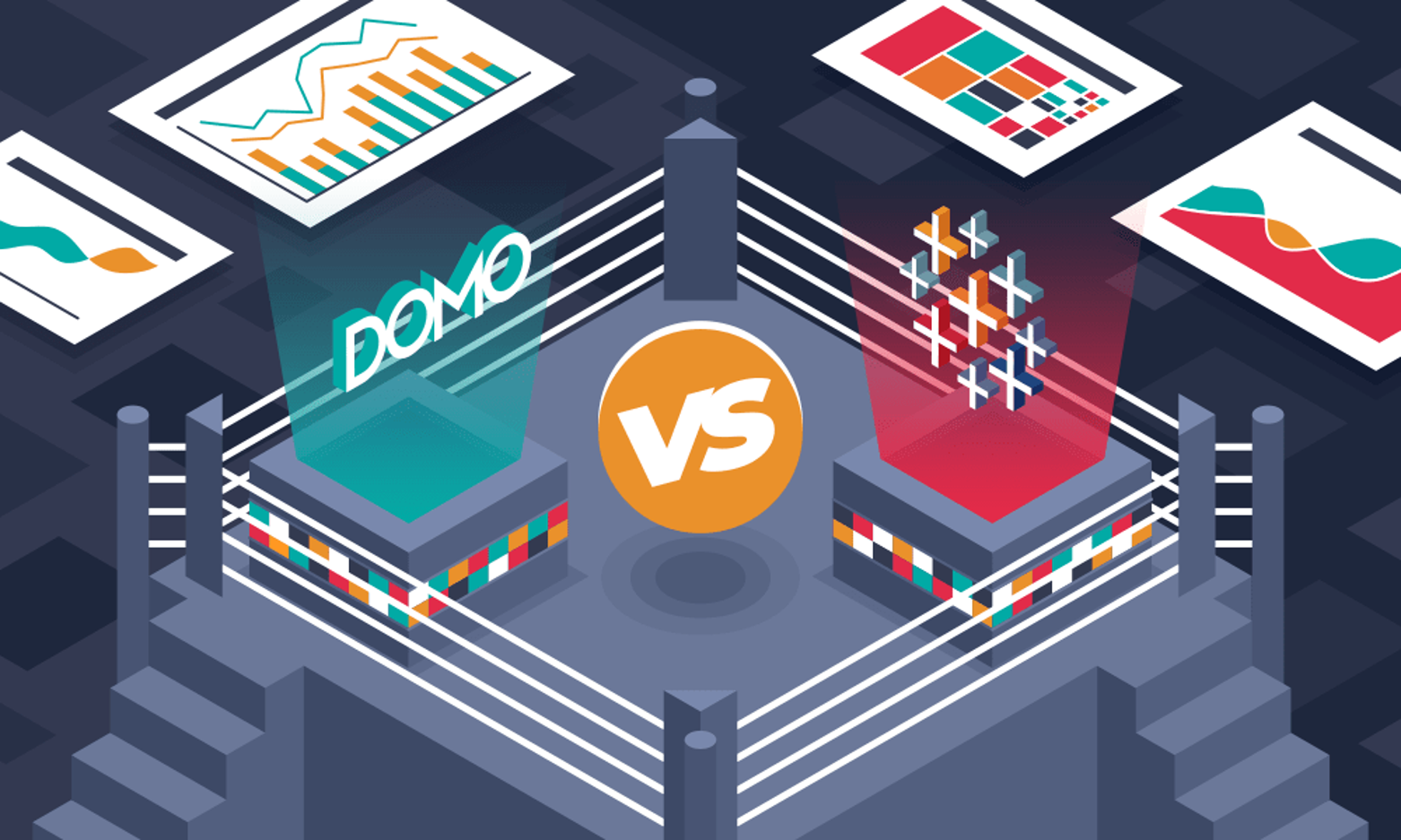
Data analysis capabilities

What is Domo?
Domo is a business intelligence software platform that offers multiple data apps to help your business turn data into faster, smarter, more effective decisions. The low-code software is cloud-based. Domo also offers a mobile app so you can take it with you wherever you go for on-the-fly analysis.
What is Tableau?
Tableau is one of the biggest names in the BI software market and has a track record nearly two decades long. It is used by major companies all over the world, including Verizon, Charles Schwab, Lufthansa and Hello Fresh.
Domo vs. Tableau: User friendliness
Both Domo and Tableau are in the middle in terms of user friendliness. They’re not as hard to navigate as some of the BI software offered by legacy enterprise software developers, but they’re also not as accessible as other options that are specifically geared to beginners.
They are both powerful data analysis tools, and with that functionality naturally comes a higher learning curve. Domo’s user interface is slightly more updated that Tableau’s, which can be a tad bit harder to navigate, but overall, they are pretty close in this regard.
Domo vs. Tableau: Data analysis capabilities
- Domo and Tableau offer excellent data analysis capabilities, although getting the data in the system is another story. Due to its high number of out-of-the-box connectors, Domo makes it easier to get your data into the platform, cleaned up, matched and ready for action. Unfortunately, some users found this same extraction process to be really clunky and slow in Tableau, especially if they were pulling data from a nontraditional source.
- Once the data is ready for analysis, however, the reason for Tableau’s popularity becomes apparent: The software makes it easy to manipulate the data. In fact, both Tableau and Domo offer point-and-click functionality, so you don’t have to know coding to sift through the data.
Domo vs. Tableau: Data visualizations
- Domo and Tableau receive high marks for their data visualizations, which users say are clear and easy to understand.
- Tableau’s options can sometimes look a little bit less slick than Domo’s, but both still look great, whether you are using them internally or externally. Tableau does have a cool feature, called Tableau Public, that enables you to create data visualizations, publish them and embed them on your website for free. Domo offers similar embed functionality with Domo Everywhere, but it’s part of the overall paid package and not available for free as a standalone.
Domo vs. Tableau: Integrations and connectors
- Tableau offers more than 100 native-built connectors through its own website, with a handful of additional connectors made available by partners on the Tableau Exchange portal. These integrations cover all the major players, including Microsoft Excel and SAP HANA.
- Domo, which offers more than 1,000 prebuilt connectors — nearly 10x that of Tableau — covering not only the major players but basically every connector your company might conceivably want. If you have a more niche software that you need to connect to your BI platform, the odds are much higher that Domo will have it versus Tableau.
All Rights Reserved | Genx DMCC